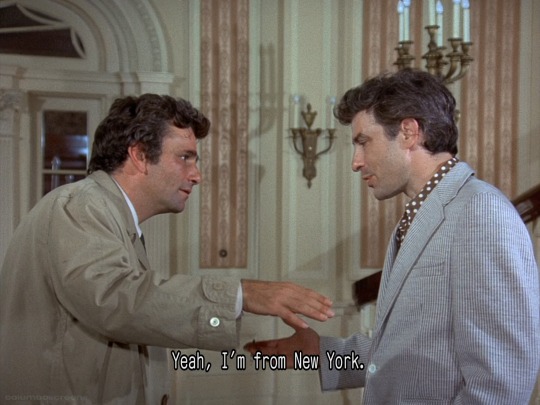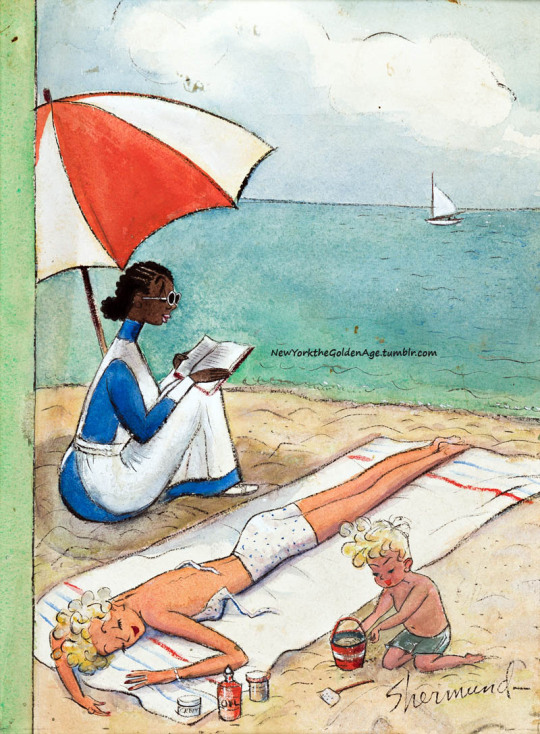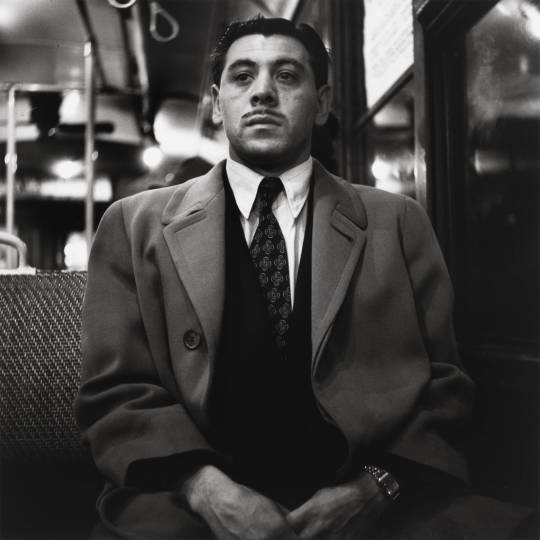#black new yorkers
Text
New York would create a commission to consider reparations to address the lingering, negative effects of slavery under a bill passed by the state Legislature on Thursday.
"We want to make sure we are looking at slavery and its legacies," said state Assemblywoman Michaelle Solages before the floor debate. "This is about beginning the process of healing our communities. There still is generational trauma that people are experiencing. This is just one step forward."
The state Assembly passed the bill about three hours after spirited debate on Thursday. The state Senate passed the measure hours later, and the bill will be sent to New York Gov. Kathy Hochul for consideration.
New York would be following the lead of California, which became the first state to form a reparations task force in 2020. That group recommended a formal apology from the state on its legacy of racism and discriminatory policies and the creation of an agency to provide a wide range of services for Black residents. They did not recommend specific payments amounts for reparations.[1]
The New York legislation would create a commission that would examine the extent to which the federal and state governments supported the institution of slavery.[2] It would also address persistent economic, political and educational disparities experienced by Black people in the state today.
According to the New York bill, the first enslaved Africans arrived at the southern tip of Manhattan Island, then a Dutch settlement, around the 1620s and helped build the infrastructure of New York City. While the state Legislature enacted a statute that gave freedom to enslaved Africans in New York in 1817, it wasn't implemented until 10 years later.[3]
"I'm concerned we're opening a door that was closed in New York State almost 200 years ago,"[4] said Republican state Assemblymember Andy Gooddell during floor debates on the bill. Gooddell, who voted against the measure, said he supports existing efforts to bring equal opportunity to all and would like to "continue on that path rather than focus on reparations."[5]
In California, the reparations task force said in their report that the state is estimated to be responsible for more than $500 billion due to decades of over-policing, mass incarceration and redlining that kept Black families from receiving loans and living in certain neighborhoods. California's state budget last year was $308 billion.[6] Reparations in New York could also come with a hefty price tag.
The commission would be required to deliver a report one year after its first meeting. The panel's recommendations, which could potentially include monetary compensation for Black people,[7] would be non-binding. The legislature would not be required to take the recommendations up for a vote.
New York Assembly Speaker Carl Heastie, who is the first Black person to hold the position, called the legislation "historic."[8]
Heastie, the governor and the legislative leader in the state Senate would each appoint three members to the commission.[9]
Other state legislatures that have considered studying reparations include New Jersey and Vermont, but none have passed legislation yet.[10] The Chicago suburb in Evanston, Illinois, became the first city to make reparations available to Black residents through a $10 million housing project in 2021.[11]
On the federal level, a decades-old proposal to create a commission studying reparations has stalled in Congress.[12]
Some critics of reparations by states say that while the idea is well-intentioned, it can be misguided.[13]
William Darity, a professor of public policy and African and African American Studies at Duke University said even calling them reparations is "presumptuous," since it's virtually impossible for states to meet the potentially hefty payouts.[14]
He said the federal government has the financial capacity to pay true reparations and that it should be the party that is responsible.[15]
"My deeper fear with all of these piecemeal projects is that they actually will become a block against federal action because there will be a number of people who will say there's no need for a federal program," Darity said. "If you end up settling for state and local initiatives, you settle for much less than what is owed."[16]
K, Blog Admin notes:
[1] This is useful because it's attempting institutionalization of the divestment in needing money to solve the issue of slavery reparations and instead aims to provide a means to account for such a system by way of adhering to necessities. This seems like a legislative path to that. A formal apology is well overdue so the creation of these institutions, paired with divestment in money (which are literal enslavement notes) makes for said apology more effective and honest.
[2] Correct, slavery is handled and supported to this day at a state and federal level. Any strategies aimed at changing this enslavement system requires changes at both state and federal levels, otherwise what's the point?
[3] Legislature like the one in 1817 what it did was make enslavement go covert while continuing to operate with the same engine. Which is why we need to correct any semblance of it existing by abolishing institutions that were created from slavery and repurpose ones sabotaged by past and existing pro slavery legislature. Reparations fixes itself to do just that.
[4] Read [3] because slavery's door was never shut. There's never been enough evidence, something I hope this legislature corrects, with regards to presenting when this "end of slavery" ever occurred. As far as everyone experiencing this god awful system is concerned slavery continued just fine.
[5] Slavery as a system created such a historical inequivalence for all involved that a path has never honestly been formed to claim we're all equal. How can we "continue" on something we've never even established?
[6] Translation: The enslavers who own this system over us and invested so much in slavery can't put their money where their labor is. This is our issue how? Legislature like this will help correct that.
[7] I would hope that this conversation around monetary compensation and reparations from enslavement systems involves a divestment plan from a currency note that has factual connections to and will continue to be looked at as an enslaver note to those who study slavery historically. So this might look like an institution that can help communities divest from ever even needing to use money due to their systemic connections to slavery.
[8] This legislature is needed and overdue, I wouldn't call it historic yet. People within government tend to have a low bar for what's historic and epic.
[9] Not enough people. 3 is not enough. This is a ridiculously low amount considering how easy it can be to sabotage this work as they have in the past, this increases that chance. They need more community input. Otherwise, what's the point?
[10] Further implicating these states with systemic slavery.
[11] Not enough for similar reasons that a slaver creating their own paper and telling you to live off of it is not enough to stop slavery.
[12] So the one thing that did have a semblance of working, you let it rock there, doing nothing? Seems like an institutional trend.
[13] How? Explain using evidence in the same way we abolitionists use evidence to prove slavery is not needed.
[14] Agreed, and they don't have the capacity to make their enslaver dollars mean much into the future. Money temporarily becomes pay outs which are like the apology letter you include system changes with otherwise its just enslavers recycling their image.. AGAIN.
[15] Agreed, but I hope this doesn't mean shift in focus from what needs to structurally change at a state level and what these types of legislature can do. I think federal changes should come with state strategizing as well.
[16] see [14] and [15]
#reparations#thoughts#news#policy#legislature#trans atlantic slave trade#slavery#abolish slavery#abolish police#abolishment#black lives matter#new york#nyc#new yorkers#black new yorkers
73 notes
·
View notes
Text

“Bodega Cat,” by R. Kikuo Johnson.
1K notes
·
View notes
Text
Gates of Heaven

View On WordPress
#best cartoons#black humor#Cartoon#cartoons#dark humor#humor#New Yorker Cartoons#Rejected Cartoons#war and peas
386 notes
·
View notes
Text

Richard Avedon (1923-2004), 'Edward Gorey', 1992
"Gorey acknowledged his debt to the Surrealists:
"I sit reading André Breton and think, “Yes, yes, you’re so right.” What appeals to me most is an idea expressed by [Paul] Éluard. He has a line about there being another world, but it’s in this one. And Raymond Queneau said the world is not what it seems—but it isn’t anything else, either. These two ideas are the bedrock of my approach. If a book is only what it seems to be about, then somehow the author has failed."
But, however much Gorey owes to the Surrealists, I see in him, equally, their less fun-loving predecessors, the Symbolist poets and painters of the late nineteenth century: Baudelaire, Mallarmé, Khnopff, Munch, Puvis de Chavannes, Redon. That strange world of theirs, caught in a kind of syncope, or dead halt, of feeling—open a Gorey volume on a winter afternoon, and that’s what you get. (Source)
787 notes
·
View notes
Text

new yorker ⋇ 30 mar
#the new yorker#urban landscape#cityscape#new york city#nyc#monochrome#black and white#photographers on tumblr#original photography#2024
99 notes
·
View notes
Text
actually yknow what in celebration of black history month .




THEY ARE BLACK TO MEEEEE ☝🏽☝🏽☝🏽☝🏽☝🏽☝🏽
#txt#like idk banjo gives me southern black man from Georgia#Tom was always afro-colombian to me 👍🏽#Falco. well. gestures.#and d.rib.ble and spi.tz are new yorker cab drivers let me have this#like idk! we have fun here!
116 notes
·
View notes
Text
It's very dear to me that Dooku is a canonical book nerd who put an entire library on his stupid solar sail ship so he could read whilst ignoring Sidious's increasingly shrill and furious calls
#count dooku#showing up in the spaceport Hudson Booksellers with his New Yorker tote and those thick black rimmed glasses#he hates every book you like#big “Christopher Lee explaining that his version of Whatever Harry Potter Is was penning Tolkien beautiful hand written fan letters” energy
108 notes
·
View notes
Text
In an American au, let Remus be a New Yorker who hates on 'outsiders' pleasepleasepleasepleasepleqsepleaseplea-
#pleasepleasepleasepleasepleqsepleasepleaseplease#remus lupin#american marauders au#new yorker Remus#marauders au#marauders hc#sirius black#wolfstar#dead gay wizards#marauders#itar crows#marauders era
24 notes
·
View notes
Text


#columbo#season 2#etude in black#New York Mentioned#Bond Formed#columbo mentally jumping up and down and giggling whenever his murderer is a new yorker just like him#though in 70s Hollywood every other person is clearly from the east coast lol
92 notes
·
View notes
Note
For the requests, what about your take on Nimbasa Trio just having a nice day out? c:




ITSA SUMMER TIIIIMEE!!!
#new yorkers discover da sea#i gave them floaties bcz they cant swim for shitm#submas#azzy art#art#fan art#cute#wholesome#nimbasa trio#gym leader skyla#gym leader elesa#subway boss ingo#subway boss emmet#subway boss kudari#subway boss nobori#subway twins#pokemon#pkmn#pokemon bw#pokemon black and white
1K notes
·
View notes
Text

Vintage Magazine - The New Yorker (Nov03rd1986)
Art by Charles Addams
#Magazines#The New Yorker#Charles Addams#Horror#Witches#Vintage#Art#Cats#Black Cat#1986#1980s#80s#Chas Addams
291 notes
·
View notes
Text
53 notes
·
View notes
Text




QUINTA BRUNSON
📸 by AB+DM for The New Yorker
25 notes
·
View notes
Text

Barbara Shermund, A Day at the Beach, a cover for The New Yorker, published August 5, 1944.
It's unusual to see a person of color so prominently featured in a mainstream publication at the time, even if it was as a servant. She is reading, though, which suggests that she's a more serious person than her sunbathing mistress.
Photo: The Swann Galleries
#vintage New York#1940s#Barbara Shermund#The New Yorker#August 5#5 August#Aug. 5#5 Aug.#beach#illustration#Black servant#reading#magazine cover
79 notes
·
View notes
Text

Subway, New York
Louis Stettner (American; 1922–2016)
1946 (printed 1980s)
Gelatin silver print
SFMOMA, San Francisco, California
#American photography#American photographers#American photographs#Louis Stettner#Stettner#1940s#1940s New York#subway#New York subway#street photography#street photographs#street photographers#American street photographers#American street photography#suits#neckties#subway cars#New Yorkers#commuters#wristwatch#wristwatches#San Francisco Museum of Modern Art#SFMOMA#topcoats#mustaches#black and white#black-and-white photography
14 notes
·
View notes
Text

Kadir Nelson (American, b. 1974) • New Yorker cover • February/March, 2015
Celebrated illustrator Kadir Nelson began his career as the lead conceptual artist for Steven Spielberg’s Oscar-nominated 1997 feature, “Amistad.” His works are usually figurative paintings that focus on historical narrative and heroic subjects in American culture. Nelson’s art is often informed by the Old Masters like Henry O. Tanner and displays a realistic technique that incorporates modern urban realism and masterly works of turn-of-the-century American painters.
“ There are hundreds of artists, but my style has been heavily influenced by Norman Rockwell, N.C. Wyeth, Ernie Barnes, Dean Cornwell, Charles White,”explained Nelson, 44. “I like the style, I like their technique, the emotion that comes through their work, the light and shadow, the drama, the use of color and storytelling. ”
— Kadir Nelson
#illustration#art#illustrator#artwork#kadir nelson#magazine cover illustration#new yorker magazine#black artist#african american illustrator#american artist#painter#oil painting#painting#black history month 2024#black art matters#sassafras & moonshine blog#illustration blog
16 notes
·
View notes